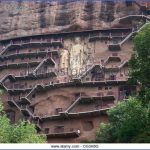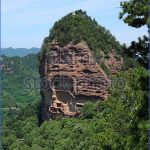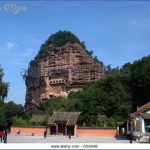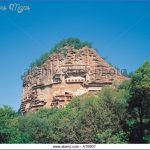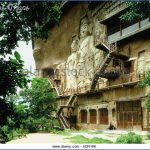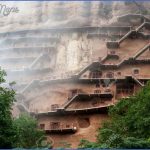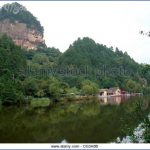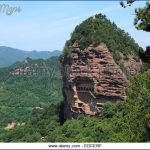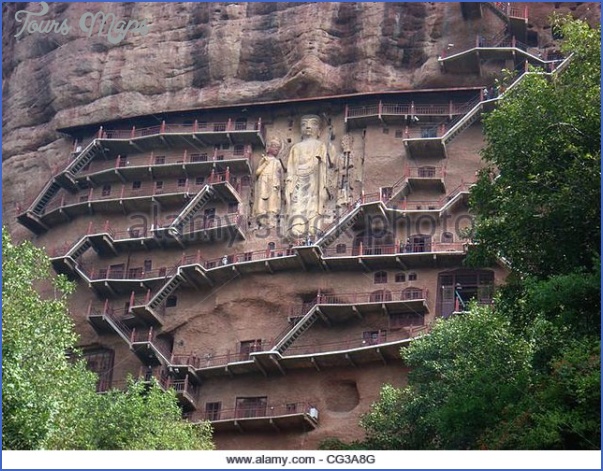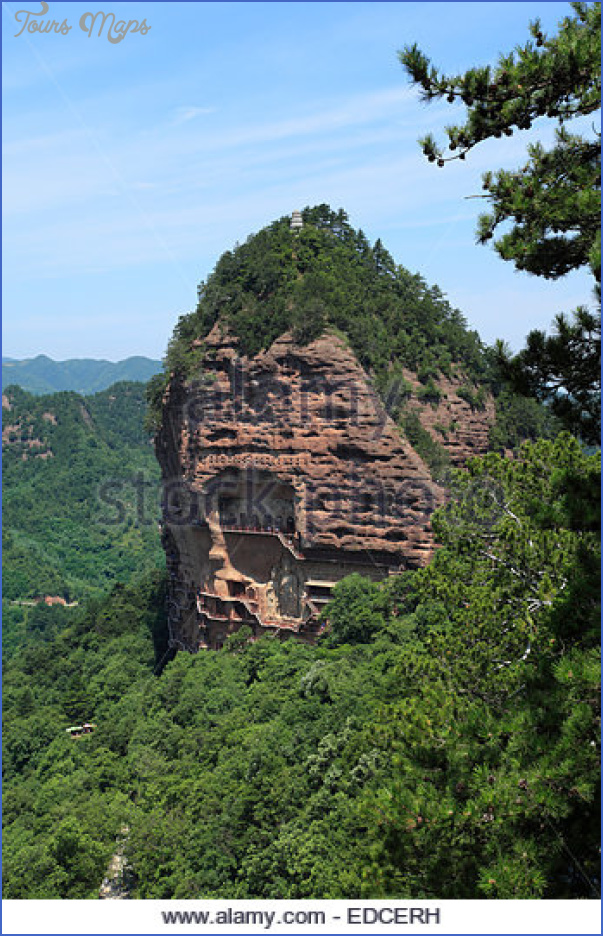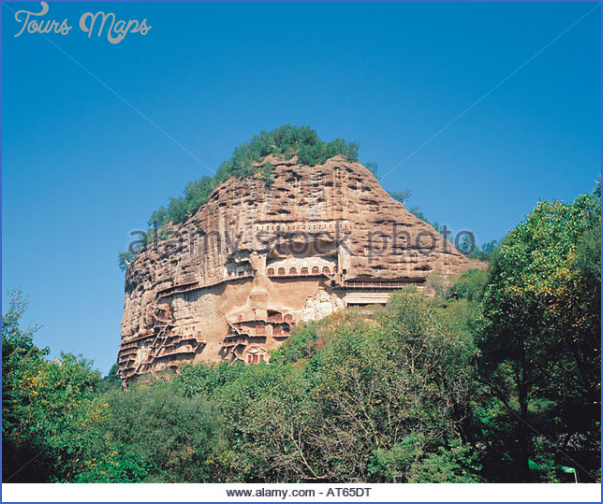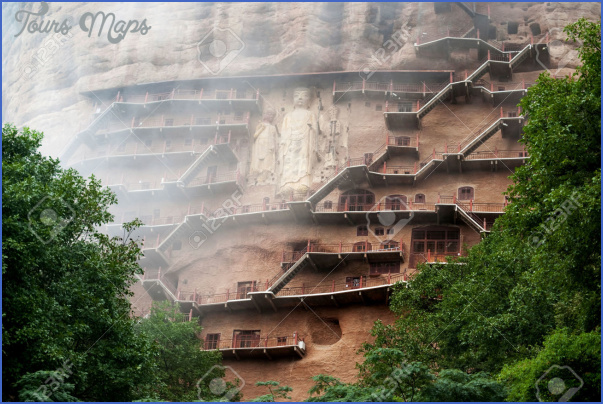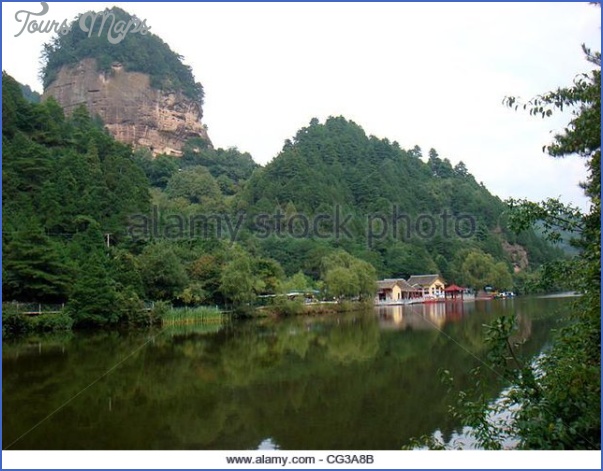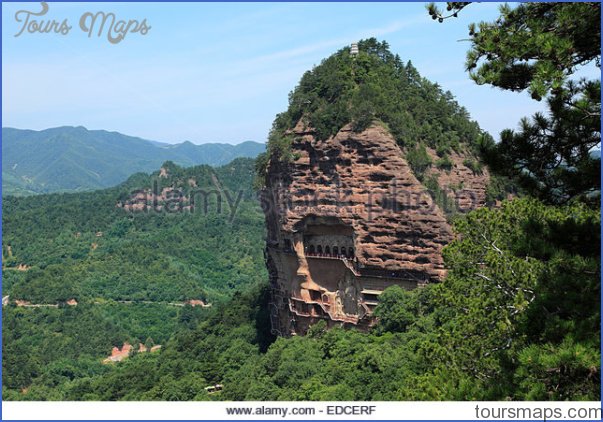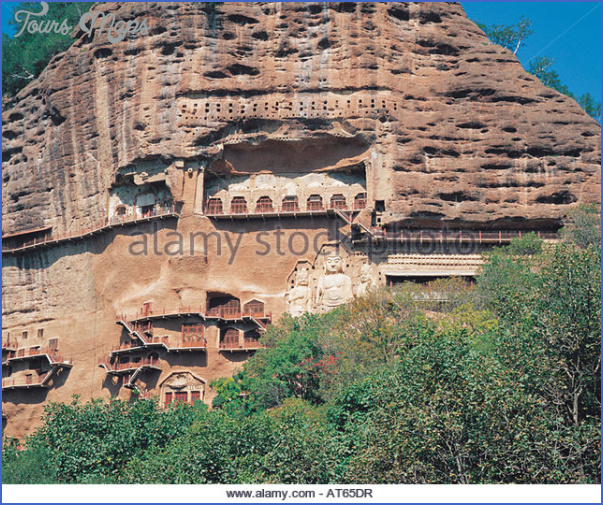The museum’s exhibits include ceramics, some of which date from Neolithic times. The most famous item is the bronze sculpture “Flying Horse from Gansu”, with its hoof resting on a bird. It comes from a tomb from the Eastern Han period (24-220) which was discovered in 1969.
In the north of the city stands Baitashan, named after the seven-storey 17m/56ft high White Pagoda, which was erected on the summit under the Yuan dynasty (1271-1368) and subsequently rebuilt in the middle of the 15th c. From here there is a superb view. Together with the sacred buildings surrounding it, the pagoda forms thefocal point of a public park, laid out in 1958, which covers an area of 8000sq.m/1’/2 acres.
In the south of the city lies Wuquanshan, about 1600m/5250ft high and named after the Five Springs at the foot ofthe mountain. Scattered over its slopes are several monuments of considerable cultural and archaeological significance. The Park ofthe Five Springs has been laid out here.
The most important of these monuments is the Temple of Reverence and Solemnity, built in 1372. Here it is possible to see a 3m/10ft high iron bell, dating from 1202 and with a weight of some 5 tons, and a bronze Buddha sculpture, dating from 1370 and with a height of over 5m/16ft. From the top ofthe mountain there is a wonderful view ofthe city.
These grottoes in the mountain of Xiaohishishan, about 90km/56 miles west of Lanzhou and 35km/22 miles south-west of Yongling, can be reached by bus. The cave complex was constructed in 420 but achieved eminence during the Tang dynasty (618-907). At the time of the Yuan dynasty (1271 1368) it was turned into a Tibetan monastery. The Chinese name “Bingling” is the transliteration of a Tibetan term, which means “Thousand Buddhas” or even “Hundred Thousand Buddhas”. The temple site includes 34 grottoes and 149 niches with 679 stone sculptures, 82 clay statues – the largest statue is 27m/89ft, the smallest 20cm/8in. high – and 900sq.m/9700sq.ft of wall paintings. In the 40m/130ft high grotto No. 169 there is an inscription on the north wall which confirms the year of the temple’s construction: “in the first year of Jian Hong”, i.e. a.d, 420.
Between 1964 and 1974 the hydro-electric power station Liujia Xia was built, which provides Gansu and areas of the neighbouring provinces with energy. During the construction a 200m long dam was constructed in order to protect the grottoes from any flooding. As a result it is possible to visit them by boat.
The Terrace of the Thunder God, 8.5m/28ft high, 106m/348ft long and 60m/197ft wide, is located 250km/155 miles north-west of Lanzhou, near the town of Wuwei. On it stands the Temple of the Thunder God, which was reconstructed under the Qing dynasty (1644-1911). In October 1960 a Han grave, dating from the early 2nd cž was discovered under the terrace. Among the valuable burial gifts is the famous statue of a galloping horse (known as the Flyiing Horse) which was chosen as its symbol by the Municipal Tourist Office.
About 250km/155 miles south-west of Lanzhou (and accessible from there by bus), near the town of Xiahe, stands the Labrang Monastery, an important religious building ofthe Gelupka sect. The monastery was founded in about 1710 and was once inhabited by between 3000 and 4000 monks.
The Grottoes of Maijishan, situated 300km/185 miles south-east of Lanzhou on the outskirts ofthe little town of Tianshui, can be reached from Lanzhou by train. The 194 grottoes, which date from the 4th c. onwards, were hewn out of two walls of rock and contain over 7000 sculptures and 1300sq.m/14,000sq.ft of frescos. Among the motives represented here there are Buddhistic themes and scenes from the political and everyday life of the era.
Grottoes of Maijishan Maijishan Shiku Photo Gallery
Maybe You Like Them Too
- The Best Cities To Visit in The World
- World’s 10 Best Places To Visit
- Coolest Countries in the World to Visit
- Travel to Santorini, Greece
- Map of Barbados – Holiday in Barbados

